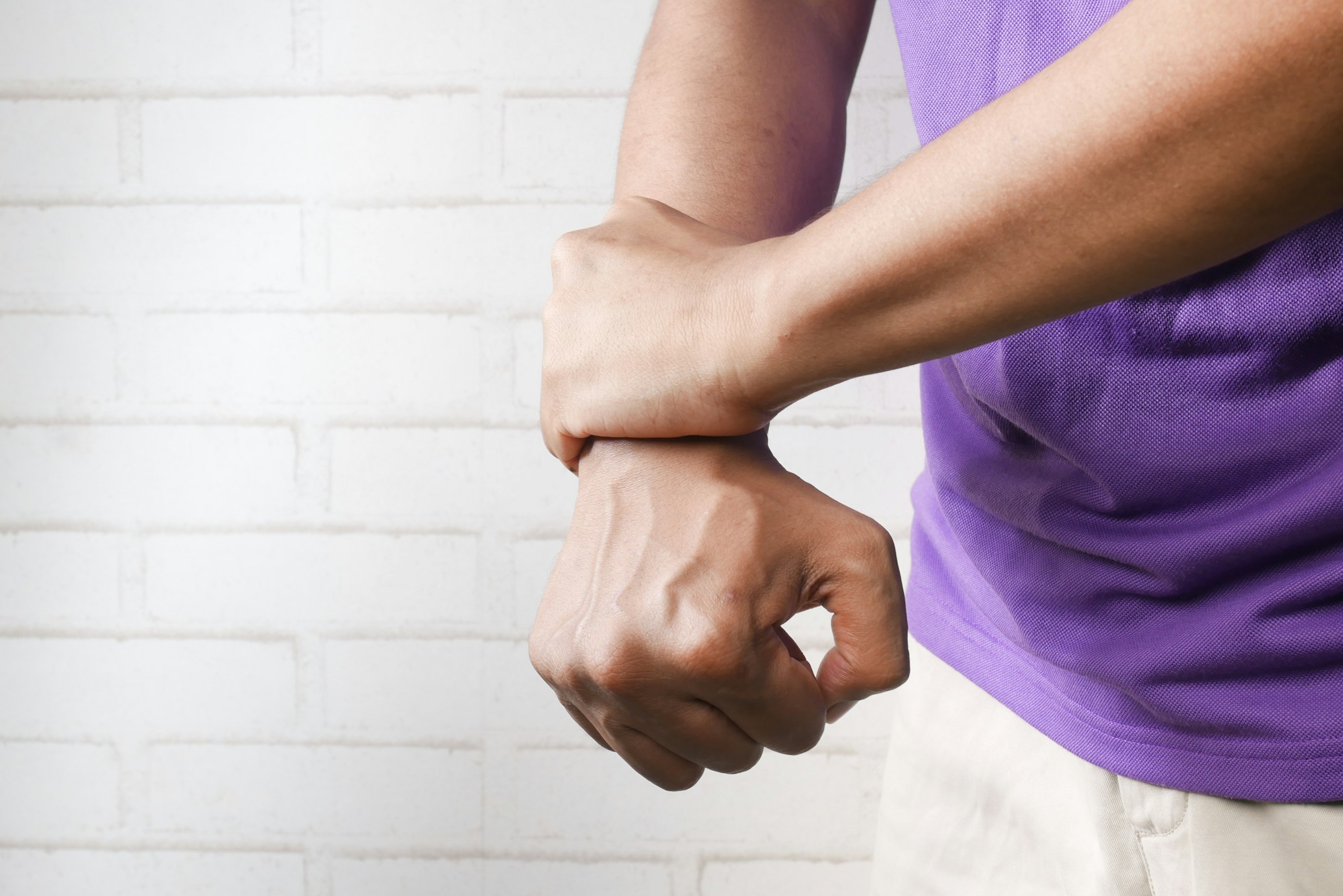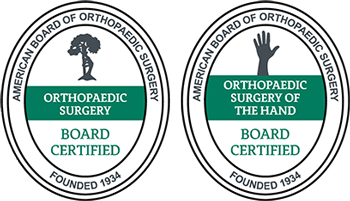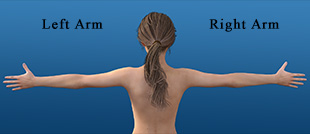Can a Wrist Sprain Heal on its Own?
As one of the most frequently used and injured joints, the wrist’s resilience is consistently tested. Even mild damage to this part of the body, such as a slight sprain, can make performing everyday activities difficult. If this has happened to you, you might be wondering whether the sprain can heal on its own or if you need medical intervention.
In this article, we explore the intricacies of wrist sprains, explaining what they are, what can cause them, and their symptoms. We explore whether it’s possible to let a sprain heal on its own and when seeking medical attention from our hand and wrist experts at The Hand and Wrist Institute is necessary.
Contents
What Is a Wrist Sprain?
A wrist sprain is an injury that occurs when the ligaments in the wrist stretch or tear. Ligaments are tough, fibrous tissues that connect the bones in the wrist joint. They play a key role in stabilizing the joints by connecting bones to one another. When the wrist is subjected to a forceful blow, sudden twisting, or excessive bending, the ligaments can stretch or tear, leading to a sprain.
What Causes a Wrist Sprain?
Many things can cause a wrist sprain, including the following:
- A fall or impact: One of the most common causes of wrist sprains is falling onto your outstretched hand. The impact with the ground can forcefully bend your wrist into an unnatural position, injuring the ligaments.
- An injury sustained while playing sports: Sports that involve high-impact or contact activities, including basketball, gymnastics, and snowboarding, can increase your risk of a wrist sprain.
- A sudden twisting movement:A fast or forceful twisting of the wrist, such as during a sudden change in direction, can result in a ligament sprain or tear.
- A car accident: The force generated during a car accident or collision with another type of vehicle can cause significant trauma to the wrist.
- Repetitive strain or overuse: Activities involving repetitive wrist movements, such as typing or using certain tools, can cause overuse injuries and sprains over time.
- Lifting heavy objects: Lifting heavy objects without protecting your wrists can strain the ligaments and result in a sprain.
- Wrist hyperextension: Extending the wrist beyond its normal range of motion, either by accident or during certain activities, can cause ligament damage.
- A pre-existing condition: People with weak ligaments or previous injuries may be more prone to sprains. Certain pre-existing conditions, such as Ehlers-Danlos syndrome, can affect ligament strength and increase the risk of an injury.
Symptoms of a Sprained Wrist
A sprained wrist can cause a range of symptoms, the severity of which varies based on the extent of the ligament damage. Common signs and symptoms of a sprain include:
- Persistent pain around the wrist joint.
- Swelling and bruising.
- Restricted range of motion.
- Difficulty or pain with wrist movement.
- Tenderness in the affected area or sensitivity to touch.
- Warmth and redness around the wrist.
- A popping or tearing sensation at the time of injury.
Can a Wrist Sprain Heal on Its Own?
Wrist sprains can often heal independently with conservative measures and self-care, especially if the sprain is mild to moderate. The body has a remarkable ability to repair and regenerate damaged tissues, including ligaments. The healing process varies depending on the severity of the sprain and how well it’s managed. Here are some treatment methods you can try at home to treat your wrist injury:
- Rest: Allowing the injured wrist to rest is essential during the healing process. Avoid activities that put stress on the wrist and cause pain.
- Ice: Applying ice to the affected area can help reduce swelling and relieve pain. Ice your wrist for 15 to 20 minutes every few hours during the first few days after sustaining the injury.
- Compression: Wrapping the wrist with a compression bandage can provide support and help control swelling. However, it’s important not to wrap your wrist too tightly, as this could restrict blood flow.
- Elevation: Keeping the wrist elevated, especially when resting, helps minimize swelling. Elevating the wrist above the level of your heart can help drain excess fluid.
- Over-the-counter pain medication: Nonsteroidal anti-inflammatory drugs, such as ibuprofen, can help reduce pain and inflammation.
- Immobilization: In some cases, we might recommend wearing a splint or brace to immobilize your wrist while it’s healing and prevent further strain on the ligaments.
In-Clinic Treatment for Severe Wrist Sprains
Medical intervention can be necessary for severe sprains, those accompanied by complications, and sprains that have failed to heal with at-home treatment. In such cases, we might recommend the following in-clinic treatment at The Hand and Wrist Institute:
- Physical examination: Our orthopedic specialists will assess the severity of your sprain by conducting a physical examination and reviewing your medical history.
- Diagnostic tests: We might conduct scans, such as X-rays or magnetic resonance imaging studies, to rule out fractures.
- Casting or splinting: For severe sprains, we might use casting or splinting to provide more rigid support during the healing process.
- Physical therapy: Once the initial pain and swelling have subsided, we will typically recommend physical therapy exercises to improve your wrist’s range of motion, strength, and flexibility. This can help prevent stiffness and improve overall function.
- Corticosteroid injections: We might administer corticosteroid injections directly into the joint to reduce inflammation and provide temporary pain relief.
- Surgery: In cases where the ligaments are severely injured or there are associated fractures, surgical intervention might be necessary to repair the damage.
When To Visit The Hand and Wrist Institute in Dallas, Texas
If you suspect you have a wrist sprain, seeking prompt medical attention is important, especially if you’re experiencing persistent or worsening symptoms. Wrist sprains can vary in severity, ranging from mild stretching of ligaments to partial or complete tears. An accurate diagnosis can rule out more severe injuries, such as fractures, so you can receive the appropriate treatment. For personalized advice and assistance with your wrist injury, schedule an appointment with our orthopedic specialists today.
person holding hands of another person by Towfiqu barbhuiya is licensed with Unsplash License


























